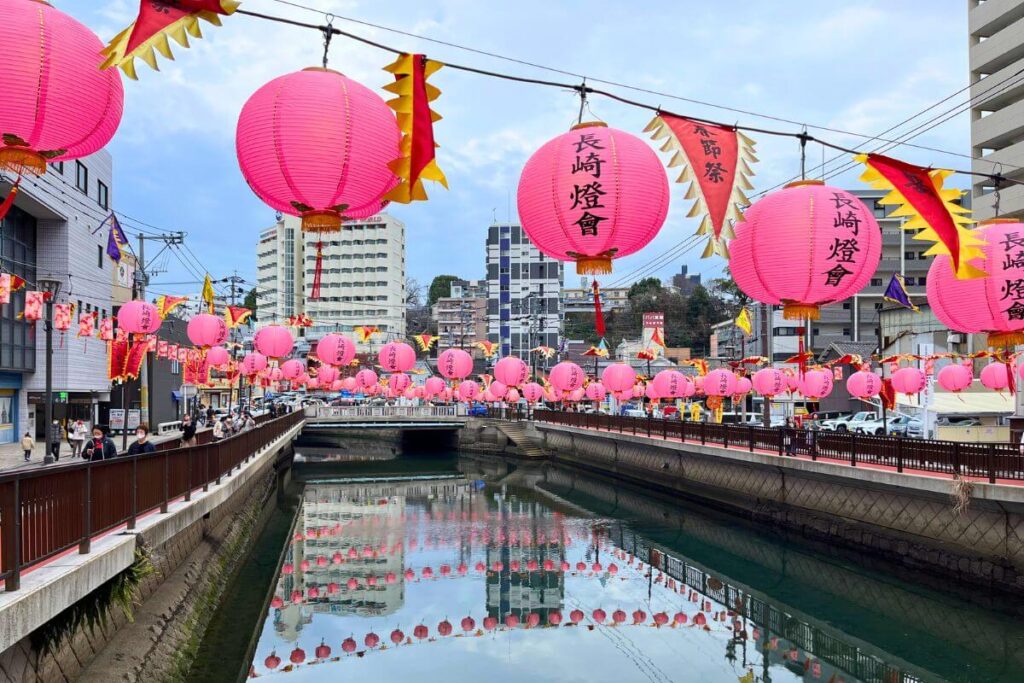
Last updated on March 11, 2024 by Krysti
Taking a day trip to Nagasaki City?
Then look no further! Because I’ve got you covered with this ultimate guide to one day in Nagasaki!
While the city is most widely known for the tragedy it suffered during WWII, Nagasaki is actually an incredible destination – one that has rebuilt itself into a vibrant and thriving metropolis.
Offering stunning coastal views, lively traditional festivals, delectable local cuisine, and a diverse cultural atmosphere, Nagasaki is, without a doubt, a great addition to any Japan itinerary.
I recently spent a couple of days exploring this unforgettable port city and had a wonderful time discovering its unique highlights and attractions – which there are plenty of!
From ancient temples to bustling shopping centers, sobering museums, and serene parks, there really is a lot to do and see here.
But what if you only have one day in Nagasaki? Where should you go? What should you do? And, most importantly, what deserves to be prioritized?
We’ll discuss all this and more as we plan out the perfect Nagasaki day trip!
Best Time to Visit Nagasaki

Nagasaki is a great destination any time of the year – even in the middle of winter!
Like much of Kyushu, Nagasaki is a great destination to visit pretty much any time of the year.
Given it’s located along Japan’s southern coast, the city rarely experiences cold weather – even during winter.
That being said, most people prefer to visit the city during spring and fall, as both of these seasons offer mild temperatures with minimal rain.
Spring, in particular, is especially popular during the cherry blossom season, when the city’s parks explode with color.
Aside from this, winter is another great option to consider, particularly the month of February – as this is when the Nagasaki Lantern Festival is held in honor of the Chinese New Year.
I personally traveled to Nagasaki during this time and absolutely loved the festive atmosphere of the city. Many of the streets were completely decked out in lanterns and there were parades and performances around every corner.
It was a truly unique experience – and one that I highly recommend if you can time your visit up.
And finally, we have summer, which brings with it quite warm and humid weather.
This is perfect if you plan to explore the islands and beaches surrounding Nagasaki City. Just be aware that this time of year is also the rainiest, so you may need to be flexible with your plans.
A Note on Japanese Holidays
Japan has a few major national holidays that significantly impact travel. These include Golden Week (end of April – beginning of May), Silver Week (mid-September), and New Years.
Around these holiday periods, domestic travel peaks, prices increase significantly, and businesses may temporarily close down. Given this, I generally recommend, if at all possible, that visitors avoid travel to Japan during these times.
How to Get to Nagasaki
Nagasaki City is located along the central western coast of Kyushu Island in Nagasaki Prefecture.
Since you’re only visiting for a day, chances are you’ll be traveling from another nearby destination in Kyushu.
If this is the case, then I highly recommend taking the train to Nagasaki Station. This is typically the fastest and easiest way to reach the city.
To give you a few examples, it only takes about 1.5 hours to travel from Fukuoka to Nagasaki by train. Meanwhile, the travel time from Sasebo is approximately 2.5 hours and from Kitakyushu it’s about 2 hours – again, both by train.
If, for some reason, you opt to fly to Nagasaki, you’ll want to arrive at Nagasaki Airport (NGS).
Situated just north of the city across Omura Bay, this is the closest airport to Nagasaki City.
You can travel between the airport and Nagasaki via the airport’s limousine bus. This route takes about 40 minutes and departs directly from the airport.
Alternatively, you can grab a taxi, which will also get you to the city center in about 40 minutes. Or you can hop on the local train, which offers travel times of up to an hour.
Pro Tip: If you’re traveling by train from Fukuoka, you’ll first want to take the limited express train to Takeo-Onsen Station. From here, you can then hop aboard the Kamome 37 Shinkansen train, which will take you directly to Nagasaki Station.
How to Get Around Nagasaki
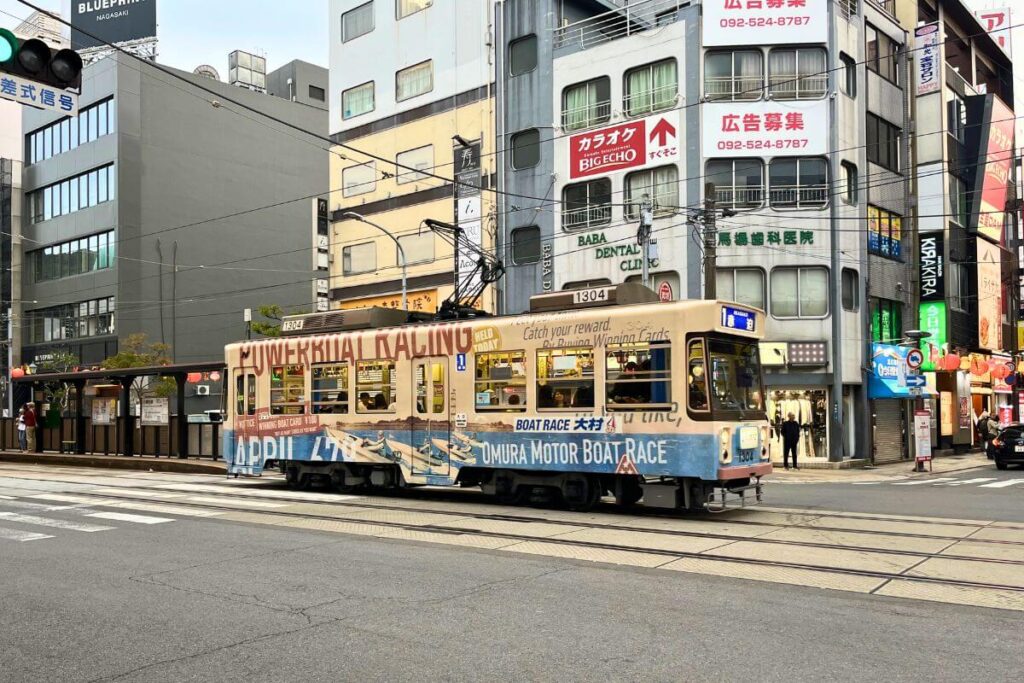
Trams are a common form of public transportation in Nagasaki.
Since you’re short on time, I recommend relying on taxis for most, if not all, of your transit needs.
While public transportation in Nagasaki is very convenient and reliable, it simply isn’t as fast as a taxi or a car. And in your case, it’s best to spend as little time in transit as possible.
That being said, if you opt to travel by public transport, you should have no problem getting around. There’s an extensive network of trams and buses that you can utilize to reach most of Nagasaki and the surrounding areas.
Just be aware that you may lose some time in transit and will likely need to pare down your itinerary a bit.
To utilize public transportation in Nagasaki, it’s best to purchase a transportation pass, also known as an IC card.
These prepaid, refillable cards can be found at many train stations and are compatible with most forms of public transportation throughout Japan.
This means that an IC card purchased in Nagasaki can be used for trains, buses, and subways in Nagasaki, as well as Fukuoka, Tokyo, Osaka, Kyoto, etc.
Some exceptions to this, however, include Shinkansen (or bullet trains), limited express trains, and highway buses. These forms of transportation typically require their own separate ticket.
Pro Tip: Use Google Maps to help you navigate the city. This app is one of the best Japan travel apps, as it syncs with local public transportation and provides accurate, up-to-date transit information.
Map of Nagasaki City
To help you plan your trip, here’s a quick map overview of all the destinations mentioned in this Nagasaki itinerary.
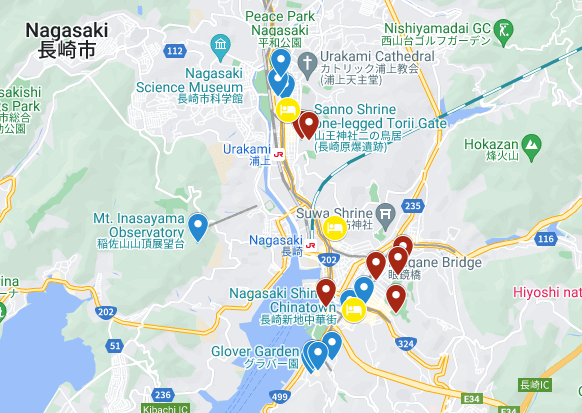
If you’d like to view an interactive version of this map, click here!
Nagasaki Day Trip: An Overview
Don’t have time to read the article in full? Here’s a quick recap of my recommendations outlining what to do in Nagasaki.
- Nagasaki Atomic Bomb Museum: Built in remembrance of the WWII bombing that devastated Nagasaki, the Atomic Bomb Museum sheds light on the city’s tragic past.
- Nagasaki Peace Park & Hypocenter Park: Located next to each other, the Peace Park and Hypocenter Park feature several monuments and statues that commemorate the bombing of the city.
- Shinchi Chinatown: As one of the largest Chinatowns in Japan, Shinchi Chinatown is home to countless restaurants, shops, and street vendors.
- Minami Yamate Hillside: A historic foreign settlement, Minami Yamata offers incredible hillside views, as well as access to several historical sites, including Glover Garden.
- Mt. Inasayama Observatory: Renowned for its stunning 360-degree views, Mt. Inasayama Observatory is one of Nagasaki’s most famous attractions.
Nagasaki Day Trip: Explained
On that note, let’s dive in and discuss in detail the perfect Nagasaki day trip itinerary. For this one, I’ve built in two afternoon activities for you to choose from – either Nagasaki’s Chinatown or Minami Yamate Hillside. While you could probably squeeze them both in, you’ll likely be rushed for time. So my suggestion is to choose the one that most interests you and go with it. That being said, feel free to pick and choose and adapt this itinerary as you see fit!
Visit the Nagasaki Atomic Bomb Museum
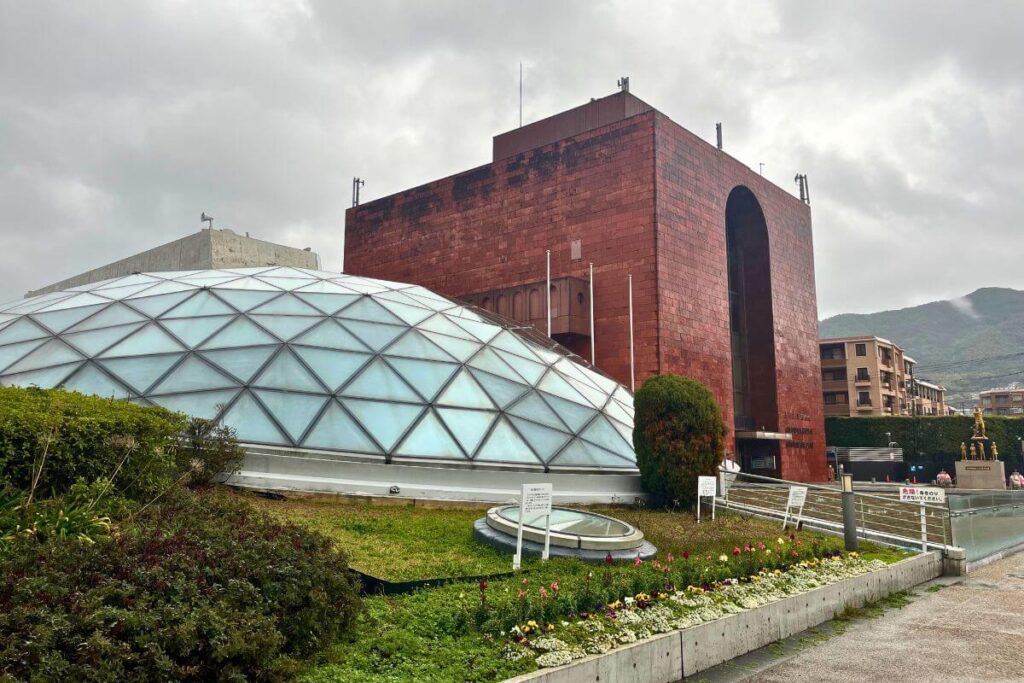
On August 9, 1945, at approximately 11:02 am, Nagasaki became the second city in the world to ever be struck by an atomic bomb.
It’s unclear exactly how many people were directly impacted by this, but some sources estimate that as many as 150,000 individuals were either killed or injured.
In memorial of this devastating event, the Nagasaki Atomic Bomb Museum was founded.
Within its walls, you’ll find a variety of exhibits detailing the events that unfolded that day and what followed in the aftermath.
I’ll be honest, I didn’t personally visit this museum during my trip to Nagasaki. I’ve been to the one in Hiroshima a few times and just couldn’t bring myself to do it again.
The experience is definitely sobering, but important nonetheless.
If you’ve never had the opportunity to visit an atomic bomb museum, I highly recommend doing so while in Nagasaki.
Reflect at Nagasaki Peace Park & Hypocenter Park

The Peace Statue in Peace Park during a rain storm.
Across the street from the Atomic Bomb Museum, you’ll find two related parks – the Nagasaki Peace Park and the Hypocenter Park.
The Peace Park, which was created in memory of the bombing victims, features a variety of statues and monuments, including the Fountain of Peace and the Peace Statue.
Meanwhile, the Hypocenter Park marks the exact location where the bomb was dropped.
The city erected a black-stone column to commemorate the event. And right next to it lies the ruins of what was once a cathedral church.
Discover Shinchi Chinatown
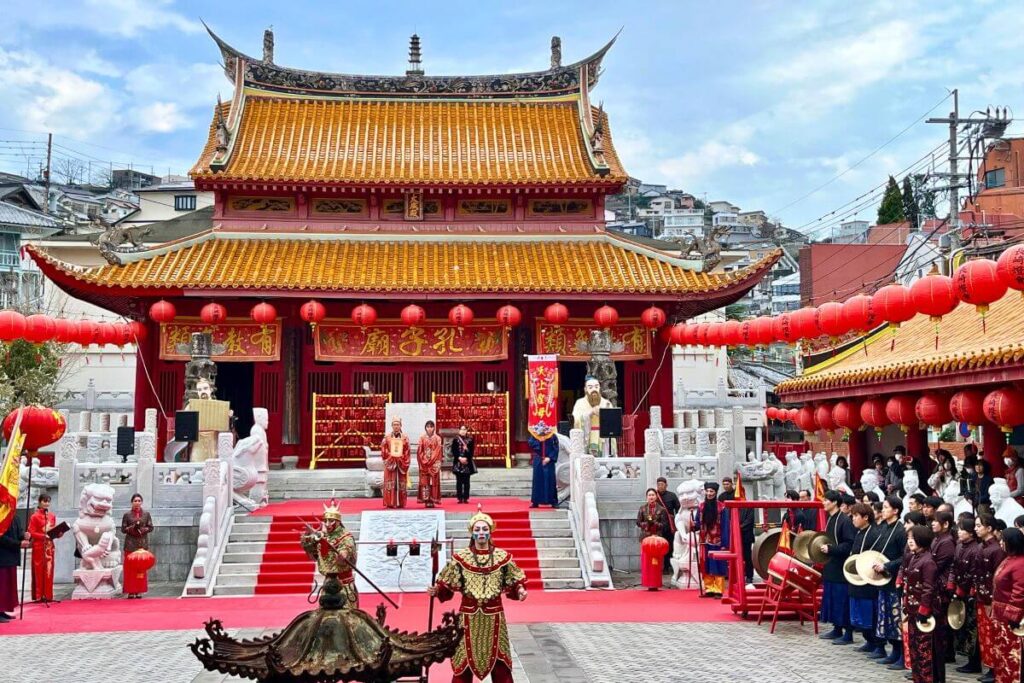
Cultural performance held during the Lantern Festival at Nagasaki Koshibyo Confucius Shrine.
Dating back to the 17th century, Nagasaki’s Chinatown is the oldest in Japan. It also happens to be one of the largest, next to Yokohama and Kobe.
Spanning approximately 250 square meters, the district is home to countless eateries, shops, and street vendors.
The area is particularly known for its fusion restaurants, which combine Chinese and Japanese cuisines.
Nearby, you’ll also find the Nagasaki Koshibyo Confucius Shrine, one of the few Confucius shrines in Japan.
And, also within walking distance, is Hamanomachi Arcade, a roof-covered shopping street that houses approximately 700 different storefronts.
Explore Minami Yamate Hillside
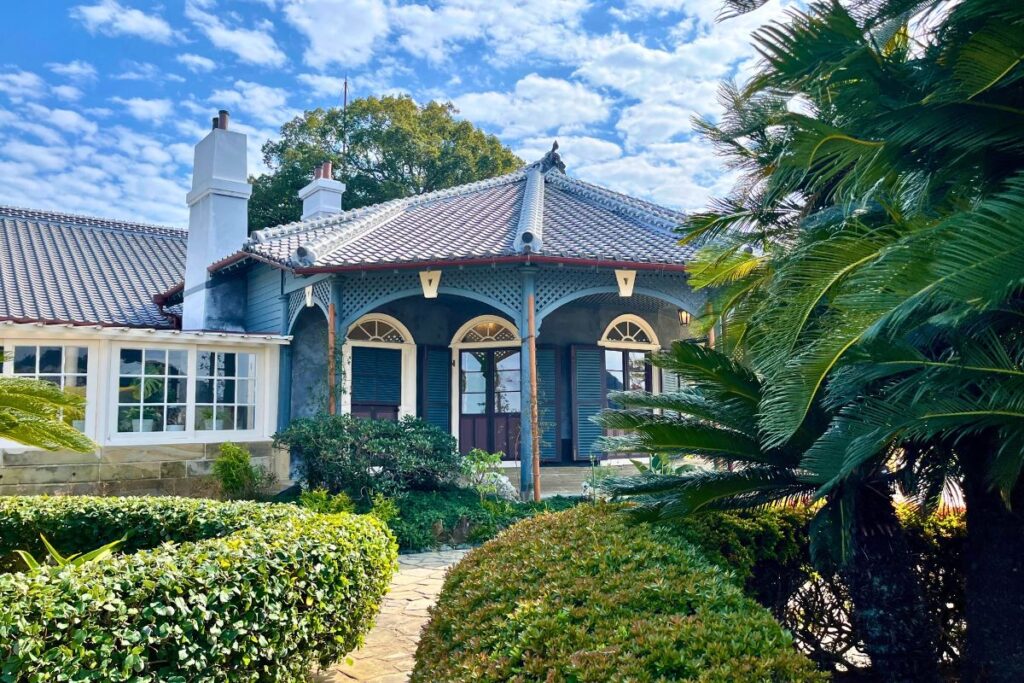
A European-inspired home in Glover Garden.
For approximately 200 years, beginning in the mid-17th century, Japan closed off all of its ports to Western trade, except for the one in Nagasaki – which remained open to the Dutch.
As a result of this, the city became a known hub for international trade. And when Japan fully reopened its borders to the West in the 19th century, European merchants flocked to the area.
A number of them even ended up settling in Nagasaki, which led to the creation of Minami Yamate Hillside, Nagasaki’s famous foreign settlement.
Today, the area is a popular destination known for its Western-style attractions.
Two prominent landmarks found here include Glover Garden, which features several European-influenced mansions, and Oura Cathedral, a UNESCO World Heritage Site.
In addition to this, the hillside offers incredible views of Nagasaki Port and the surrounding hillside communities.
Pro Tip: Don’t be afraid to wander off the beaten path here! Some of the best views can be found on random little side streets and pathways. There are some particularly great spots up behind Oura Cathedral around Ouratenbo Park.
Take in the Views at Mt. Inasayama Observatory
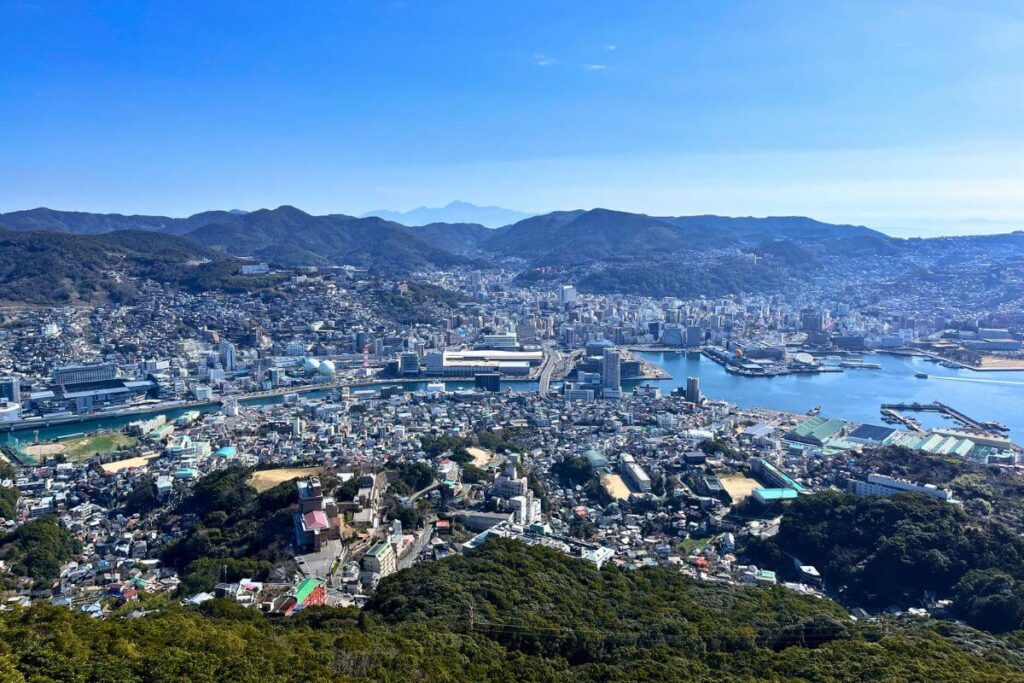
Mt. Inasayama Observatory is one of the most famous attractions in Nagasaki – and for good reason, it offers some of the best views in all of Japan.
In fact, at the 2012 World Night View Summit, the observatory was recognized as having one of the greatest nighttime views in the entire world.
Known for its 360-degree panoramic vantage points, the observatory lies 333 meters above sea level and overlooks the entire Nagasaki landscape.
If you plan to visit, you can reach the summit via public bus, car, or ropeway.
It’s also possible to hike up to the observatory. However, the only path available is along a paved road, so you’ll need to be mindful of cars.
How to Make the Most of Your Nagasaki 1 Day Itinerary
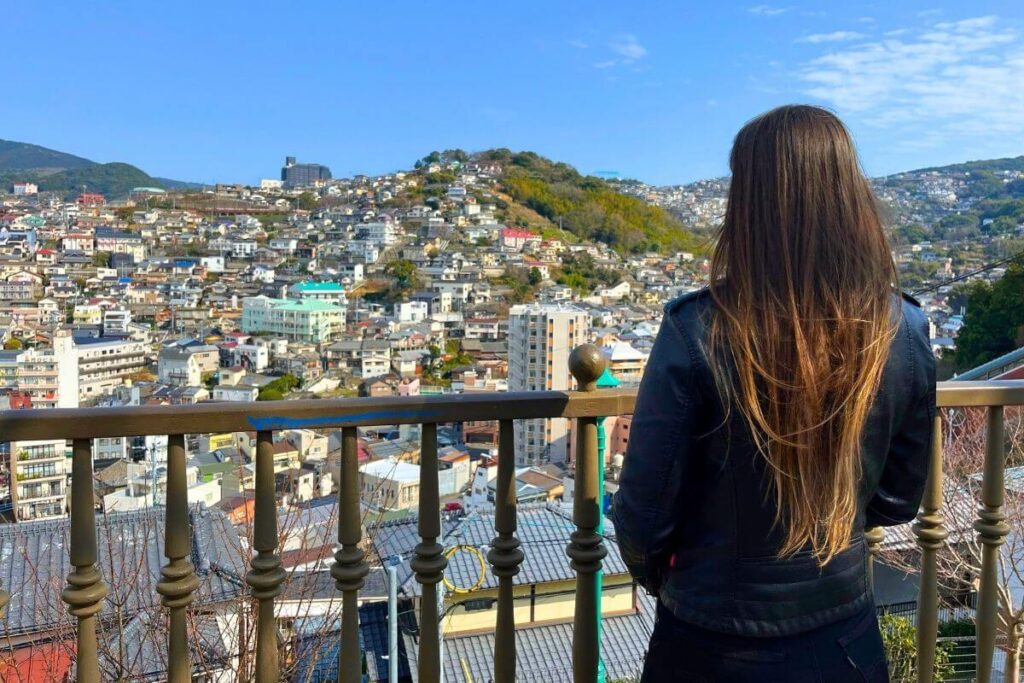
The view from Minami Yamate Hillside.
Here are a few tips and tricks to help you make the most of your Nagasaki day trip!
Arrive Early & Stay Late
Arrive as early as you can and stay as late as you can. Or better yet, spend the night in Nagasaki. This will help you maximize your time in the city and provide you with more opportunities for sightseeing.
Don’t Overpack Your Day
There’s a lot to do in Nagasaki. And truth be told, you won’t be able to experience it all in one day. So don’t try to. Pick a few things that really interest you and go with it. You’ll enjoy the city much more if you aren’t constantly rushing around from place to place.
Opt to Travel by Taxi
While public transportation is widely and readily available in Nagasaki, taxis are simply faster and easier when you’re short on time. And, honestly, they aren’t very expensive. So, definitely keep them in mind as a valid option.
Plan Out Meals Ahead of Time
Don’t waste time figuring out where to go and what to eat. Believe me – this can really cause delays in your schedule. Instead, look up restaurants in Nagasaki beforehand and have a list ready to go. Better yet, make reservations in advance so you aren’t stuck waiting for a table.
Join a Nagasaki Day Trip Tour
If you’re worried about the logistics of planning a day trip to Nagasaki, you can instead opt to join a guided tour. There are several for you to choose from, although they don’t all include transportation into the city. So, just be aware of that.
Here are a few popular options for you to consider:
- One Day Tour From Fukuoka
- Nagasaki Half-Day Private Tour with Government-Licensed Guide
- Nagasaki Full-Day Private Tour with Government-Licensed Guide
- Nagasaki Like a Local: Customized Guided Tour
Other Things to Do in Nagasaki

Megane Bridge decorated for the Nagasaki Lantern Festival.
Interested in adjusting this Nagasaki itinerary? Or maybe you’re contemplating a longer stay? If so, consider visiting some of these other popular attractions as well!
- Megane Bridge: Also known as Spectacles Bridge, Megane Bridge is one of the three most famous bridges in Japan. Dating back to the 17th century, it was constructed by a Chinese monk and served as inspiration during the construction of Japan’s Imperial Palace in Tokyo.
- Sanno Shrine: Situated just 900 meters from the site of the atomic blast, the Sanno Shrine is a Shinto Shrine that was instantly obliterated during the bombing of Nagasaki. The only thing that remained in the aftermath was a single pillar, one half of a torii gate. While the shrine has since been rebuilt, the one-legged gate remains as a reminder of the city’s devastating past.
- Teramachi Street: Known as Nagasaki’s temple street, Teramachi is home to more than a dozen Buddhist temples. Some of the most famous include Kofukuji and Sofukuji – both of which are fortune temples dating back to the 17th century.
- Hashima Island: More commonly known as Battleship Island, Hashima is an uninhabited isle that once served as a coal mining site. Abandoned in the late-1900s, the island was eventually declared a UNESCO World Heritage Site. Today, daily tours are offered for those interested in exploring the ruins of this once-thriving community.
- Huis Ten Bosch: Located about 55 kilometers north of Nagasaki, Huis Ten Bosch is a Dutch-inspired theme park known for its European architecture and festive celebrations. In fact, the park is particularly popular during the holidays when it hosts one of the world’s largest illumination displays.
🌟Interested in visiting Huis Ten Bosch for Christmas? Be sure to check out my holiday guide for Huis Ten Bosch!
What to Eat in Nagasaki

Castella is a popular sponge cake in Japan.
Given Nagasaki’s multicultural population, the city is known for its unique fusion cuisine. Combining Japanese, Chinese, and European influences, the city offers a variety of delectable dishes and street food.
- Champon: Created by a Chinese chef during the Meiji period, champon is one of Nagasaki’s most famous dishes. Served over a creamy broth, this ramen-like creation features vegetables, pork, seafood, and udon noodles.
- Kakuni Manju: A popular on-the-go street food snack, kankuni manju is believed to be a Japanese take on the Chinese dish, dongpo pork. Featuring braised pork belly wrapped in fluffy buns, some people simply refer to it as pork belly buns.
- Toruko Rice: Translated as “Turkish” rice, Toruko rice is a Western-inspired dish that actually has no connection whatsoever to the country of Turkey. Rather it was created in Japan and is mostly found in Nagasaki Prefecture. The dish, itself, features pilaf rice, pork cutlets, and spaghetti, all covered in a demi-glace sauce.
- Castella: First introduced by the Portuguese in the 1600s, castella is a sweet sponge cake. It was adapted using ingredients local to Nagasaki and has since become a popular dessert throughout Japan.
- Shippoku Ryori: Combining Japanese, Chinese, and European elements, shippoku ryori is a culinary style that focuses on a shared experience. Instead of ordering individually, everyone at the table (usually it’s a round table) shares a mix of dishes from the various cultures mentioned above.
Where to Stay in Nagasaki

Downtown Nagasaki is a great place to stay for your first visit to the city!
If you have extra time to spare, consider spending a night in Nagasaki. This will provide you with more time to explore the city – and you won’t feel as rushed. For those interested, I’ve included below some of the most popular places to stay in Nagasaki for one night.
- Dozamachi: Centrally located, Dozamachi is a great place to stay for first-time visitors to Nagasaki. Public transportation is readily available and there are plenty of shops, bars, and restaurants in the area.
- Nagasaki Station: The area around Nagasaki Station is perfect for short stays. Here you’ll find a variety of accommodation options all within a short drive of the JR train station.
- Hiranomachi: Situated around the Atomic Bomb Museum, Hiranomachi is home to a few hotels and inns. While accommodation options are a bit more limited here, this area does offer easy access to several popular attractions.
Frequently Asked Questions About Planning a Day Trip to Nagasaki
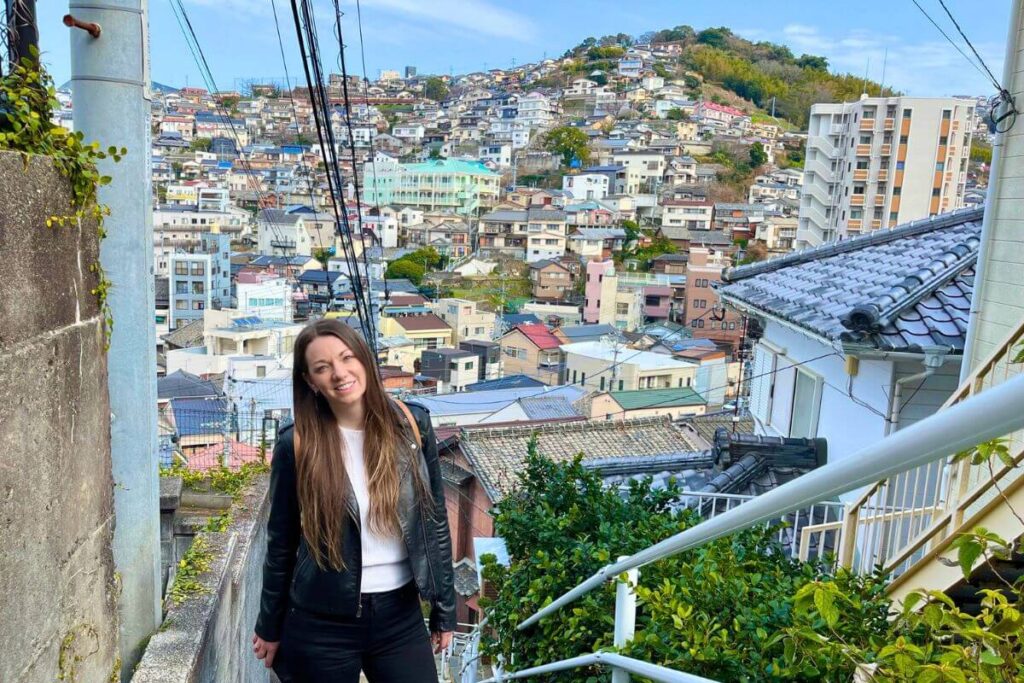
Views from Minami Yamate Hillside.
Here are my thoughts on some commonly asked questions about visiting Nagasaki.
Is Nagasaki Worth Visiting?
Yes, Nagasaki is definitely worth visiting! It’s such a unique Japanese city given its history and multicultural population. As a port city, Nagaskai was heavily influenced by Korean, Chinese, and European traders – many of whom played vital roles in the development of the city. And you can still see these influences to this day. From the architecture to the food, and even the cultural celebrations, Nagasaki is very much an international city – one that offers unique attractions and experiences.
What Is Nagasaki Famous For?
Globally, Nagasaki is most widely known for the devastation it suffered at the hands of an atomic bomb during WWII. This event completely altered the city forever and destroyed so many people’s lives. However, since then Nagasaki has rebuilt itself and is now known as a bustling, multicultural metropolis – one that offers incredible coastal views, vibrant traditional celebrations, and significant historical sites.
Is One Day in Nagasaki Enough?
One day in Nagasaki is enough time to see the major highlights, but you won’t be able to experience everything. The city has a lot to offer, so you’ll really need to pick and choose the attractions that most interest you. Ideally, I recommend spending two full days in Nagasaki, but one day is still enough time to get a feel for the city.
Can Nagasaki Be a Day Trip From Fukuoka?
Yes, you can definitely take a Nagasaki day trip from Fukuoka. In fact, this is what a lot of visitors end up doing – especially if they’re short on time. It only takes about an hour and a half to travel by train between the two cities, which leaves you with plenty of time to explore Nagasaki and its many attractions.
Final Thoughts: Nagasaki Day Trip
So there you have it – my top recommendations for a day trip to Nagasaki! Hopefully, my guide is helpful in planning your own trip to Japan’s international port city.
No matter what you decide to do, I’m sure you’ll have an amazing time. After all, Nagasaki is a truly unique city – one that offers an incredible multicultural experience!
Are you planning a day trip to Nagasaki? If so, what are you most excited to do? Let me know in the comments below!
Like this Nagasaki itinerary? Pin it now for later!
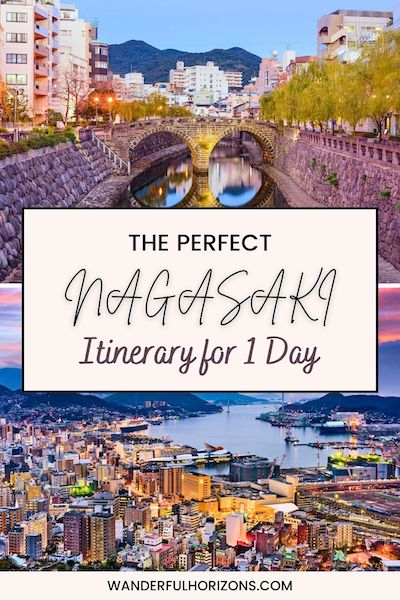
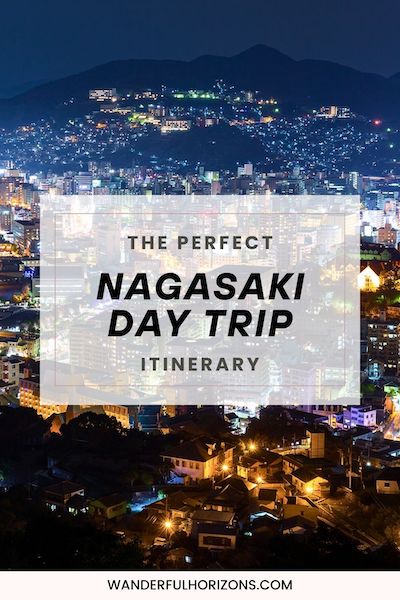
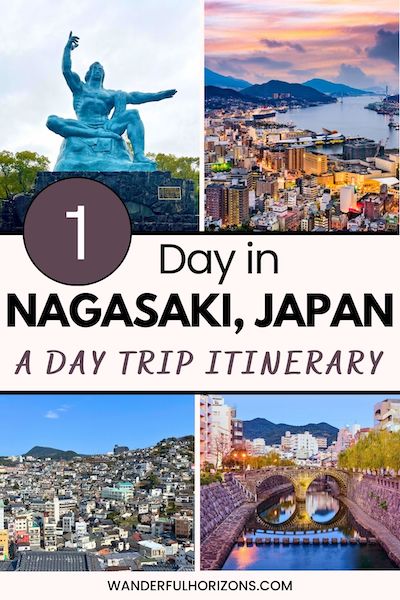

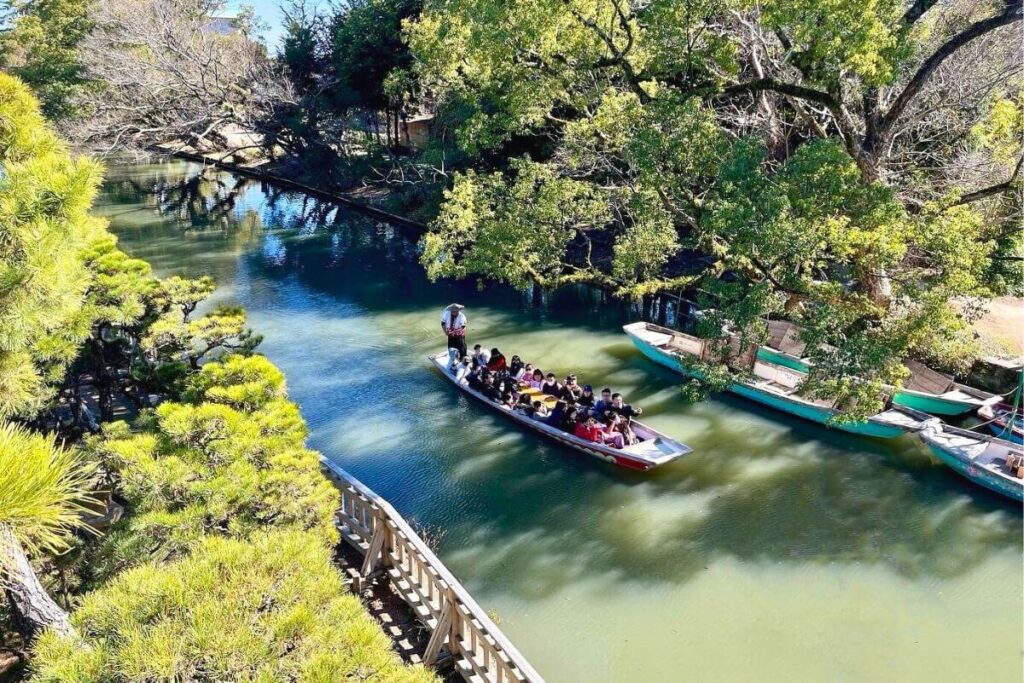
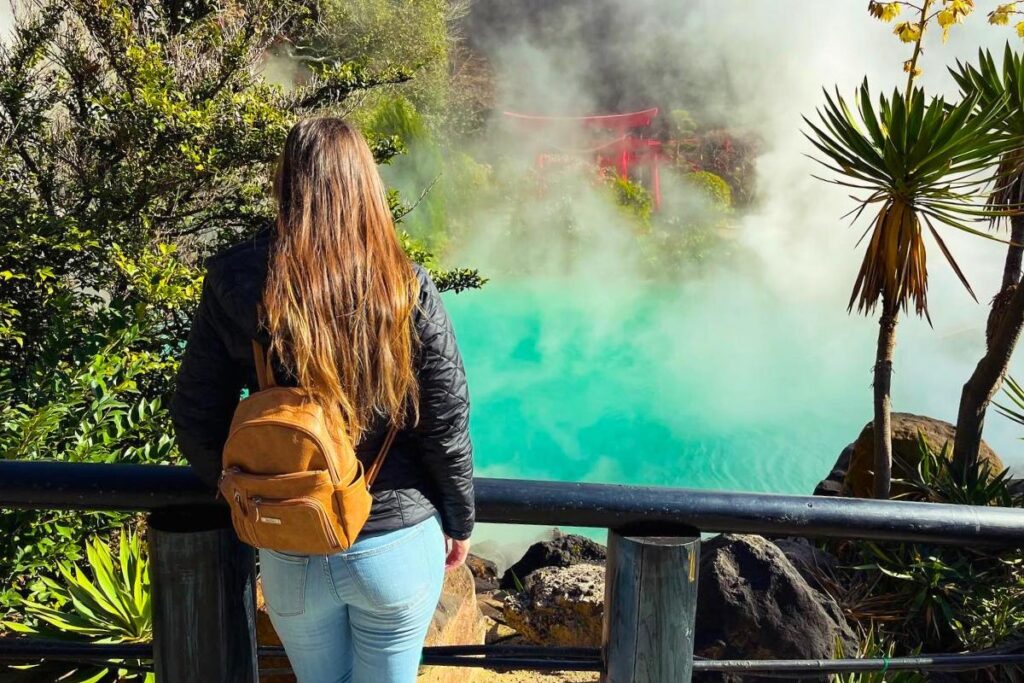
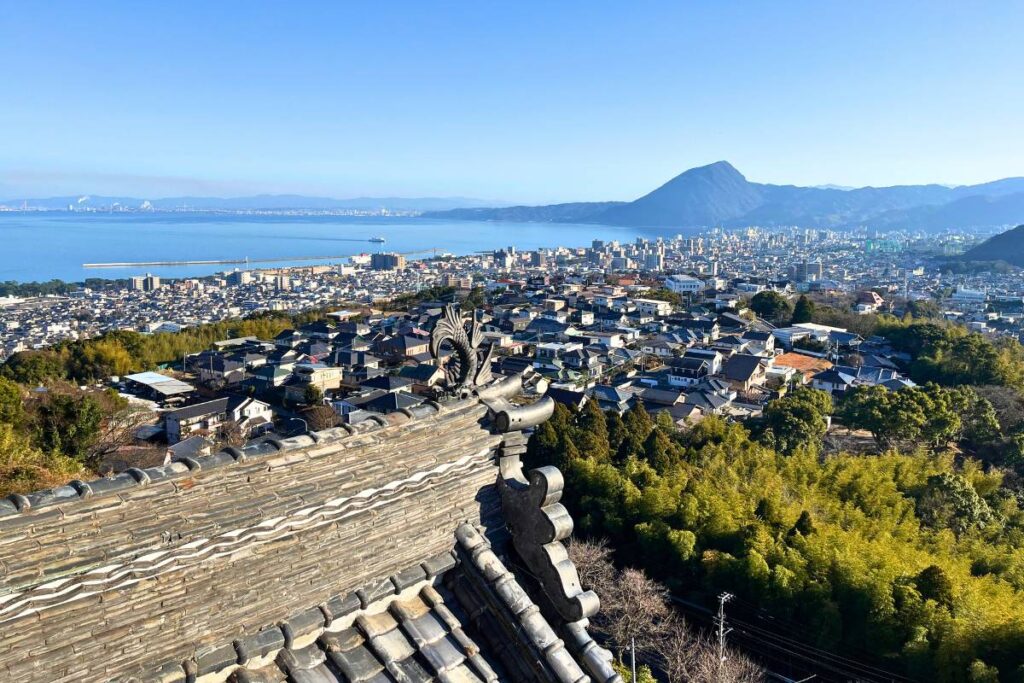
Very helpful article thank you! I am planning to travel in the next few years and this is on my list! 🙂
You’re welcome, I’m glad you found it helpful! I’m sure you’ll have a wonderful time in Japan – it’s an incredible destination!!
It is my dream to visit Japan and in particular Nagasaki. My family was deeply affected by World War II and we have studied the American and European perspective but we haven’t learned enough about what happened in Japan. I especially love your reference to Japanese holidays and when it’s important to avoid travel to Japan and Nagasaki.
I didn’t know much about the bombings in Japan either before I moved here – but I do feel that the museums (one in Nagasaki and one in Hiroshima) do a great job explaining everything. It’s definitely a tough subject and the museums are very sobering, but it’s important to learn about nonetheless. I particularly like that the museums have a whole section dedicated to world peace and the importance of preventing the use of atomic bombs.
This place looks so beautiful! I really want to go!
It really is beautiful – I highly recommend visiting, if you ever get the chance!